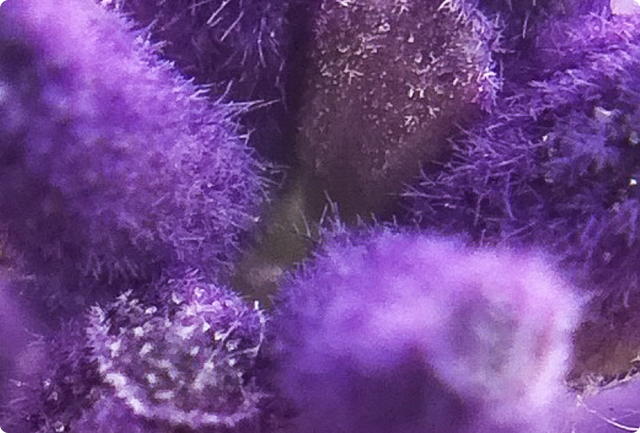About the Oil
Myrrh essential oil is steam-distilled from the resin of the Commiphora myrrha tree, a member of the Burseraceae family native to northeast Africa and the Arabian Peninsula. This richly aromatic oil has a warm, earthy, and slightly medicinal undertones, long revered in sacred rituals, perfumery, and medicine.
Myrrh oil is chemically complex, containing terpenoids (especially furanoeudesma-1,3-diene, curzerene, lindestrene, and furanodiene), sesquiterpenes, and phenolic compounds with proven bioactivities ranging from antimicrobial to neuroactive effects.
Why You Would Use Myrrh Essential Oil
- To support nervous system balance and mental clarity
- As a natural antimicrobial agent for skin and oral care
- For antioxidant and anti-inflammatory defense
- In support of seizure control and neurological protection
- To evoke grounding and spiritual presence in rituals and self-care
Clinical Findings
| Study | Participants & Methods | Key Results | Reference |
|
Promotes Calm Through GABA Support |
Brain GABA levels measured post-treatment |
Myrrh essential oil boosted calming brain chemicals (GABA), helping support relaxation and balance at medium and high doses. |
Alsuwayt et al.,2021 |
|
Confirms Calming Effect Mechanism |
GABA-A receptor blocking test |
When a GABA-blocking compound was introduced, myrrh’s calming effects were reversed—confirming its action through the brain’s relaxation pathway. |
Alsuwayt et al.,2021 |
|
Naturally Rich in Neuroprotective Compounds |
GC-MS literature analysis |
Identified terpenes like eugenol, α-pinene, and limonene—plant compounds shown to protect the brain and calm overactive neural signals. |
Batiha et al., 2020 |
Behind The Science
The essential oil of Commiphora myrrha (EOCM) appears to exert its neurological benefits primarily through GABA-A receptor modulation, similar to the action of benzodiazepines. This is supported by animal model studies where the GABA-A antagonist flumazenil significantly reduced the oil’s anticonvulsant effects.
Myrrh oil's activity is attributed to its rich composition of monoterpenes and sesquiterpenes, including eugenol, α-pinene, curzerene, and limonene—many of which are individually known to enhance GABA activity, reduce oxidative stress, and calm hyperexcitable neurons.
How and Where It Grows
Myrrh trees are hardy desert dwellers, thriving in the arid regions of Somalia, Yemen, and Oman. The oleo-gum-resin is harvested by tapping incisions in the bark, yielding golden droplets that are dried and distilled into essential oil. The yield is typically low (~0.9%), reflecting its high value and traditional reverence.
Use in Ancient Medicine
Myrrh holds an exalted place in Ancient Egyptian, Arabian, and Chinese medicine. It was used for wound care, embalming, incense, and as a general tonic. The resin and its oil were revered for both physical healing and spiritual purification, often associated with divine offerings and ceremonial anointing.
Symbolism
Myrrh symbolizes sacredness, grounding, and inner reflection. Its deep, resinous scent invites emotional release, spiritual cleansing, and a return to center. In energetic traditions, myrrh is believed to anchor the spirit during transformation, offering solace, strength, and clarity in times of transition.
INFORMATION provided is intended for informational purposes only and is not meant to diagnose, treat, cure, or prevent any disease. Statements have not been evaluated by Health Canada or the FDA. Please consult a qualified healthcare provider before using essential oils for therapeutic purposes.
References
- Alsuwayt, B., & Chidrawar, V. (2021). Antiepileptic activity of Essential Oil isolated from Commiphora Myrrha resin and its effect on brain GABA level. Annals of Clinical and Analytical Medicine, 12(Suppl 2), S177–S182. https://doi.org/10.4328/ACAM.20409
- Batiha, G. E.-S., et al. (2020). Commiphora myrrh: A phytochemical and pharmacological update. Arabian Journal of Chemistry, 13(1), 1678–1691. https://doi.org/10.1016/j.arabjc.2018.11.003
- Tisserand, R., & Young, R. (2014). Essential Oil Safety (2nd ed.). Churchill Livingstone Elsevier.
- Lestari, K., et al. (2020). Pharmacological activities of myrrh (Commiphora myrrha): a review. Journal of Advanced Pharmaceutical Technology & Research, 11(2), 59–65. https://doi.org/10.4103/japtr.JAPTR_160_19








